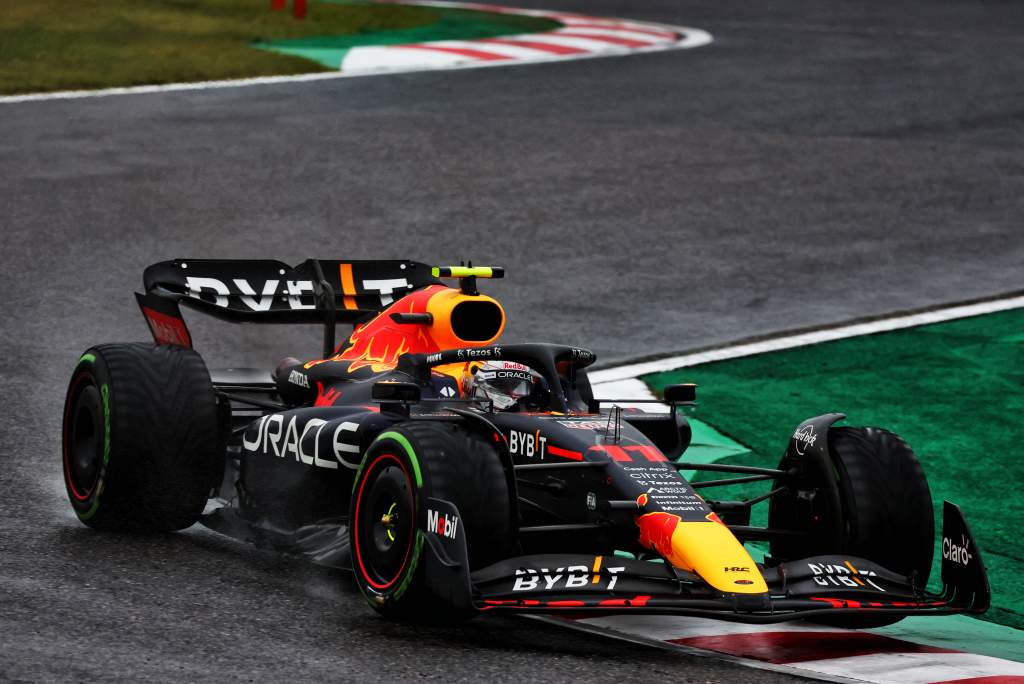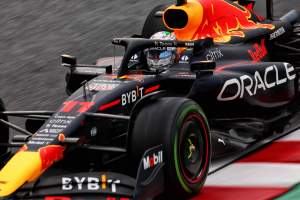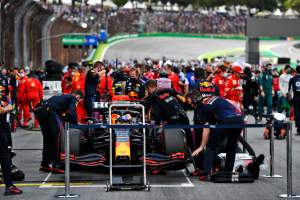Up Next

The statement released by the FIA on Monday said Red Bull overspent within the Formula 1 cost cap regulations, but it didn’t issue a punishment (of any kind) – which is the element there had been most anticipation and trepidation over when it was known a breach would be announced.
While the wording of the FIA’s update offered plenty of opportunity for interpretation and did give us some answers, there are still so many unknowns in a story that has already dragged on longer than many in F1 feel it should have.
With that in mind, The Race has attempted to pose and answer the key questions remaining, although some still remain tougher than others.
How serious was it?
The nomenclature of ‘minor breach’ might make it sound like the overspend is trivial. But given it can account for anything under 5% of the cost cap for 2021, that could still be a figure north of $7million.
We don’t know how big the overspend is and only when we know that will it be possible to say how serious it is. But even a ‘minor’ breach can be significant and it would be wrong to use the wording of the financial regulations (which lay out “procedural”, “minor” and “material” breaches) to shrug it off as nothing.
There is an enormous difference between an overspend of, say, $100,000 and a figure that could be 70 times or more over that. So until the number is disclosed, we can’t be sure.
The one thing we do know is there are plenty in the F1 paddock willing to suggest the overspend is in the seven-figure bracket. But that means nothing, it’s only what the cost cap administration determines that matters and we have to wait for details.
Why does Red Bull think it complied?
Red Bull’s argument is simple. All teams make their financial submissions and, complex as they will be, there will be a bottom-line number for their spending (discounting areas that count as excluded costs).
So in the most basic terms, Red Bull’s bottom line number is below the cost cap based on how it has presented the numbers.
That, combined with its confidence in the way it has audited itself, means that, as far as Red Bull is concerned, it has complied.
Why does the FIA think it didn’t?
We can only speculate on this, but there are a few clear pointers.
Firstly, Red Bull’s statement eliminates any possibility of this being what’s called an ‘accepted breach agreement’. That’s when the team and the cost cap panel agree on some infringement of the procedures or an overspend and come to an arrangement on the penalty. This is what Williams did for its procedural breach, with the $25,000 fine the punishment.
That means the FIA does not believe that the final number Red Bull has submitted is correct. But as the extensive paperwork will have endless details about how this was calculated, this will presumably be based on how the regs have been interpreted to create that number rather than based on the belief Red Bull is conducting some secret or fraudulent activities.
The FIA’s statement did note “all competitors acted at all times in a spirit of good faith and cooperation throughout the process”.
What are Red Bull’s options to contest this?
Red Bull’s emphatic but cooperative statement indicated that it would work with the FIA in following the correct procedure from here.
The cost cap administration “is currently determining the appropriate course of action to be taken”, and doubtless the first choice course of action would be to reach an accepted breach agreement with Red Bull. For that to happen, Red Bull would presumably have to accept that the way it interpreted certain aspects of the financial regulations is incorrect.
— Oracle Red Bull Racing (@redbullracing) October 10, 2022
But it’s important to note that the accepted breach agreement would carry with it not only a milder punishment, but is also not able to be protested by anyone.
As Red Bull has set out its stall to fight this, an accepted breach agreement seems unlikely for the time being. That means it will defend its interpretation and submission, arguing that the way it has calculated its cost cap spending figure is correct.
If it can’t do that, and is unwilling to enter into any kind of accepted breach agreement, then the cost cap administration can issue a ruling and a punishment. Red Bull could appeal against that and, as always, there’s the possibility of the ‘nuclear option’ of taking it to a real-world court.
What happens if Red Bull successfully overturns the verdict?

If Red Bull’s cost cap submission is later accepted as correct, by definition it will set a precedent for however it is accounting for certain aspects of its spending. That means other teams operating on the cost cap will be able to do the same and surely will do if it’s providing a benefit.
It’s inevitable this will mean clarifications of how the rules are interpreted and applied. And it’s important to note that it is entirely possible that the way Red Bull has put together its submission is correct according to the wording of the rules.
Given Red Bull appears keen to do battle with the cost cap administration on the details of its submission, that would indicate the team believes its interpretations are defensible and therefore acceptable under the regulations.
How long will this process take?
How long is a piece of string?
Red Bull will presumably have known about question marks about aspects of its submissions given the constant back and forth between the cost cap administration and the teams. But now it has officially been found to have committed a minor breach of the cost cap, this moves into the next phase.
With the stakes raised, it’s likely that the cost cap administration will want a quick resolution. But if it comes down to lengthy technical arguments about the wording of the regulations and accounting, it could conceivably take some time.
So the key factors in how quickly this will be resolved is just how hard Red Bull is willing to fight its corner.
What are the potential implications for the cost cap?
Potentially, far-reaching – and either for better or worse.
It could be that this first big test case shows the financial regulations are robust and stand up to scrutiny. Even if Red Bull is able to defend its position, that could allow the regulations to be tightened for the future.
But if there is a proved overspend and the penalty is not, or cannot be, as stringent as the cost cap administration wants to be – and remember this dispute is part of a far wider political battleground – it could threaten the integrity and future of the cost cap.
This is also a stern test of the FIA and the presidency of Mohammed Ben Sulayem in terms of transparency and its regulatory capabilities.







